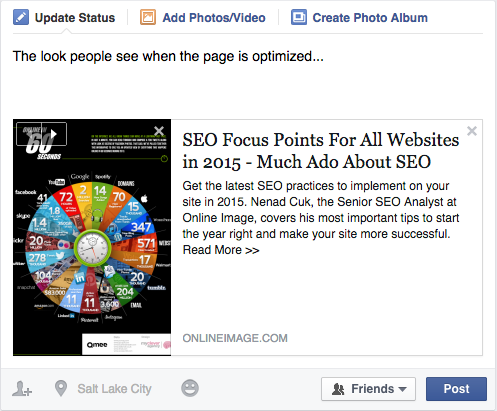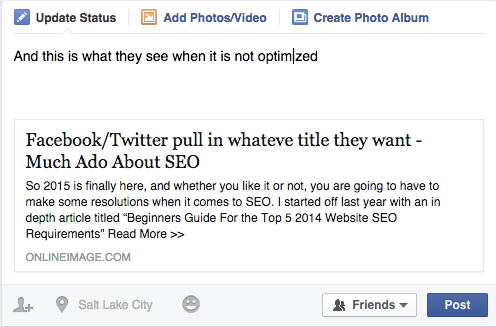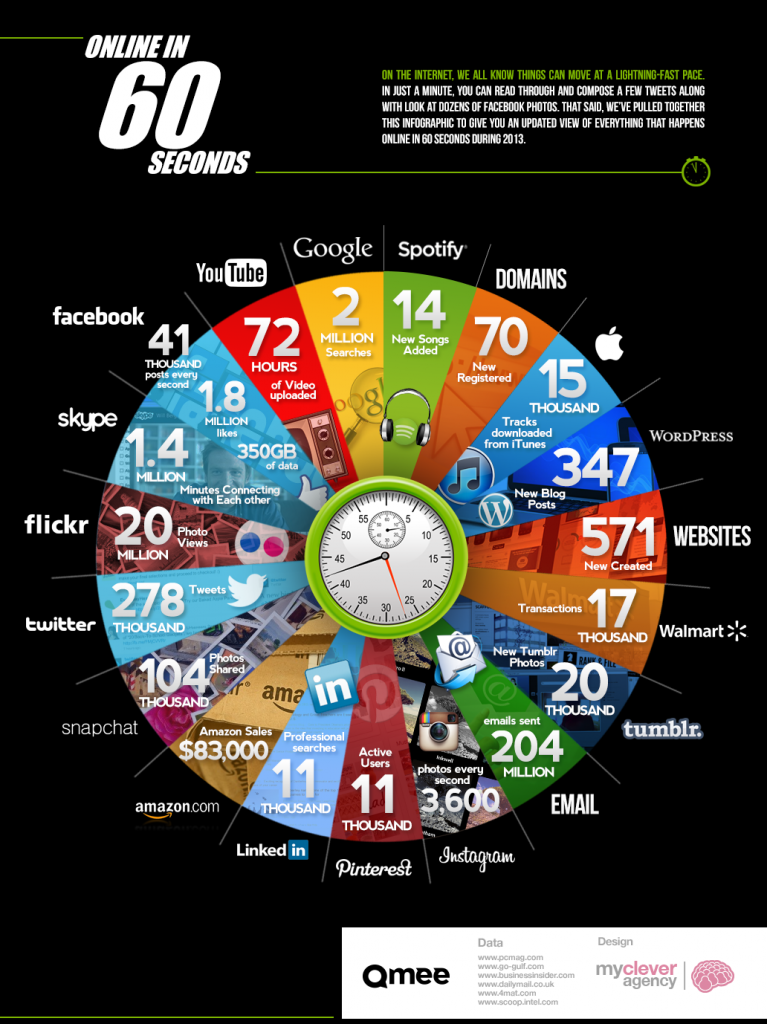So 2015 is finally here, and whether you like it or not, you are going to have to make some resolutions when it comes to SEO. I started off last year with an in depth article titled “Beginners Guide For the Top 5 2014 Website SEO Requirements”, and I want to expand on that with this year’s version for 2015.
This time around, I want to focus on some other factors, but still build on to the previous post. The beginner article is still highly relevant, and the only update to add is that while rich snippetsRich Site Summary is a format for the delivery of web content that changes regularly, such as content on a news site or blog. are still highly relevant, the authorship markup for your site has been depreciated by Google. My personal belief is that it was because it was too efficient for the few that knew how to take advantage of it, as shown in this eye tracking study:
The rest of the snippets however are usable, and I recommend implementing them if they are relevant to your site. This time around however, I’ll be covering the importance of links, having great content, optimizing your on page code and making your website mobile friendly.
Building Links is Still Relevant
Despite what you may have heard, building links is one third of the overall success with SEO. Links have always been important to get your site ranking, and frankly, without good links you won’t get anywhere. Links are generally the hardest part for our clients to get on their own, and linkbuilding is often the reason they turn to us. You can have the best looking website, with the best content, but without any links to it, you won’t be getting anywhere.
When clients hear this, they are often skeptical. The first thing that comes to their head is, “if my site is that awesome, then I’ll eventually get all the links I need”. That is partially true, there is a website right now out there that is on the path to becoming the next Facebook, or Google or LinkedIn, or whatever, but for every one of those, there is also a million sites that won’t. The competition these days is fierce, and there are only ten slots or fewer on the front page of search results for you to get attention. As a starting site, this part is especially hard with all the online options & distractions, as seen by the infografic below.
Links are a big part to your SEO success and whether you are a plumber, lawyer or franchise looking for SEO, especially if you are a new business, we have the knowledge necessary to get you the boost you need by link buildingBecause search engines judge reputation partly by looking at the number and quality of hyperlinks that point to your site, this search engine optimization process is aimed at attaining more and better links. for your site. While some claim that links don’t have that much pull, I argue that those people don’t understand SEO, as links account for over one third of your success. Link quality matters, but if you don’t have any links, or “votes” for your site from other sites on the internet, then you aren’t valuable enough to be showing up in the first few pages of Google or whatever other search engine that’s out there. Follow our blog for an upcoming post about the importance of getting these votes, but it is important to note now that the quality of links is the main thing that will make or break your site, one great link is stronger than a thousand spammy ones.
The Importance of Content
The second big emphasis businesses need to put focus on in 2015 is content creation. This is the other one third of important factors when it comes to SEO. Without relevant high-quality content, you won’t go far in rankings. When writing, optimize for both the users and the search engines. It’s a tough dance, as you not only have to appease the users intent for why they came to the page, so that they are more likely to link to you if they find the information they were looking for, but you also need relevant content that is targeted for search engines to rank you. The good news is that you can easily do both with practice, we even have a great article to spur some ideas on business blog writing.
When writing your content, the main intent should be to please the user by giving them the information they’re looking for. Using this strategy, you will mainly cover the search engines need for content optimization as you should have a general topic you genuinely wrote about, which in turn gives you plenty of keywords to potentially rank for. This is also when the backlinks kick in, because your content needs to be organically promoted and shared for search engines to find you relevant and for users to find you at all. It is a self-propagating process — users find you through links, they like your content, link to you, search engines find you and rank you higher, and more users find your site through search engines, repeating the process. If you already have great links, then the goal for your site is to optimize and develop great content to enhance your SEO. Another thing you can do is to have optimized on page code.
Coding your pages for SEO Success
While I touched up on some coding aspects last year, there is still so much that can be done, that I’m expanding on it even further in this post. At the beginning of last year, I covered the importance of great title tags, <META descriptionsThese are made up of the words that show up under hyperlinks in search engine results and are usually a few sentences about the page. Along with Meta titles, these make up metatags. and h (header) tags; these parts are the most important, but the section below is secondary importance. With so much code on the web, this portion highlights other very doable improvements that can be made to improve your SEO efforts. Some of the improvements that can be made; implement SSL, have your content above the code, use Facebook & Twitter OG tags, avoid ajax, and make sure that your 404 pages are navigable. Let’s go into a little bit more of these details to optimize your website for SEO.
SSL Implementation
Google had been on a recent bend to increase encryption on the web. First by hiding referrer header data, and now, they want to encourage sites to get a SSL certificate across their site to make the web more secure. As a means to encourage more websites to implement going secure, Google has publicly stated that this can give a small ranking boost. Implementing an SSL certificate is not super easy though, if you were on the fence of doing it, I say do it, but if you are a tiny site in your space, or don’t collect any information from users, I don’t see a point to doing all this work.
Content comes before source code
Have the written content as high up in the page source code as possible. Different websites are coded differently, the best ones to me are ones that have the written visible words as soon as possible, above the HTMLThis stands for hypertext markup language, and it is the computer language used to build websites and specify elements such as fonts, colors, and graphics. code that makes up a webpage. The worst sites I’ve seen have miles of code before the written content, this slows down the bots crawling your site, and weakens your content as it doesn’t show up until later for bots to analyze it. Basically you want your most important words to show up as soon as possible, above the sidebar, widgets, or any other code.
Use the Facebook & Twitter Open Graph (OG) tags
This is kind of a cheat, but it helps set up the content for sharing, so it looks better in peoples feeds, which brings more traffic and more chances to get links to your content. See the below examples with and without the OG tags.

Optimized OG Tag

Non-optimized OG Tag
Avoid Ajax
Google & other search engines claim to have a method for handling Ajax websites, but this is only still recent and your site won’t be as optimized as well as it could be if you had a more natural html user interface for bots to crawl through (such as with php, asp or similar). The issue with Ajax websites is that they use the “/#page-name” infrastructure, I prefer the cleaner “/page-name”, and if you look at the results in the SERPs, so do the search engines. The issue that comes from using Ajax is that it is a method to send and receive data in the background, without having to change the page currently being viewed, this is also the drawback. The way it looks to search engines is that they are basically looking at one single page that has all the content on it, so while visually you have different content showing up when a user clicks on different links, search engines see one page with all of the content on it at once. The reason this is bad is because it dilutes your keyword topics, as you don’t have a central page, or URLThis type of uniform resource identifier (URI) is the name for essentially all addresses online, but specifically ones that use the HTTP or HTTPS protocol., for the bots to focus on when they evaluate your site. This is slowly changing, but for the meantime, avoid using it.
Build Custom 404 pages
Can users navigate from your 404 page? You should check this out by typing in yoursite.com/sdofihseoifhdf or whatever other page you know doesn’t exist. If your site takes you to a page where you can navigate & search from, that’s good, but if it is a dead end, that’s bad. Those users are a lot more likely to just hit the back button and return to wherever they went to. Side tip, if you have a search bar on your site, you should be tracking what users are looking for via Google Analytics or other methods.
Make your site mobile/tablet friendly
This one is self explanatory, but a biggie. Check out my “Responsive vs. Mobile Site SEO” post for a lot more details. Basically the big thing that is going to be our focus, and should be yours, is how ready sites are for the mobile web. There are more and more users that are shifting to mobile devices as their primary method of searching, and depending on what your line of business is, maybe it’s even the primary search method for your industry already. Ignoring these potential customers is dangerous because Google and other search engines, in turn, ignore you when they have to show sites that are good mobile fits for their users devices. If your site isn’t ready, it has a less likely chance that it will show up in the SERPs to mobile & tablet users.
The topics covered in this post should be mixed in with the topics I covered last year as your primary checklist for 2015. Some things will take a week to implement, others will take you all year, but you will be on the path to SEO success. As always, if you have trouble implementing any of these things yourself or would like experts to take your site to the next level, feel free to reach out to Online Image®. We are your one company for in-house designers, developers, writers, linkers and SEO analysts to move your site forward.
Have a great new year!


